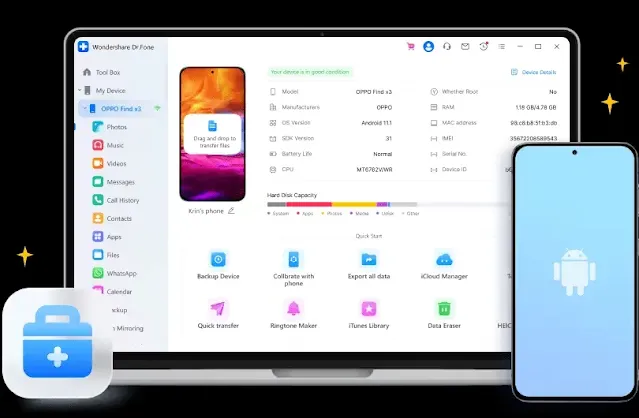AndroidTools For Mac Computer || With Lot's of features Free || 2024

- Simple and Intuitive Interface: Easy drag-and-drop functionality.
- File Management: Allows transfer of files between Mac and Android devices effortlessly.
- Compatibility: Supports all Android devices.
What is the best Android Device Manager for Mac?
The best Android Device Manager for Mac is Android File Transfer. This free utility, developed by Google, allows Mac users to easily browse and transfer files between their Android devices and Mac computers. It supports macOS versions 10.7 and higher, and Android devices running Android 3.0 or later. The interface is straightforward, providing a simple drag-and-drop functionality for file management. While it may not offer advanced features found in some third-party applications, its reliability, ease of use, and official support from Google make it a top choice for many users. For more comprehensive device management features, apps like AirDroid and MacDroid are also worth considering.
Is there an Android emulator for Mac?
Yes, there are several Android emulators available for Mac. Popular options include BlueStacks, NoxPlayer, and Genymotion. BlueStacks is widely used due to its user-friendly interface and robust performance, making it suitable for both gaming and general app usage. NoxPlayer offers similar features and is also optimized for gaming, providing a smooth experience with various customization options. Genymotion, on the other hand, is often favored by developers for its extensive range of testing and development tools. These emulators allow Mac users to run Android apps seamlessly, catering to both casual users and developers.
How to run Android OS on Mac?
To run Android OS on a Mac, you can use an Android emulator like Android Studio's built-in emulator or third-party options such as BlueStacks or Genymotion. First, download and install your chosen emulator. For Android Studio, install the software from the official website, open it, and follow the setup wizard to configure the Android Virtual Device (AVD) Manager. For BlueStacks or Genymotion, download the installer from their respective websites, install it, and follow the on-screen instructions to set up the virtual Android device. Once installed, launch the emulator, and you'll have a functional Android OS environment on your Mac, allowing you to run apps, test software, and more.
How to install Android SDK tools on Mac?
To install the Android SDK tools on a Mac, start by downloading Android Studio from the official Android developer website. Once downloaded, open the .dmg file and drag the Android Studio icon to the Applications folder. Launch Android Studio and follow the setup wizard to complete the installation process. During the setup, the wizard will guide you through downloading the necessary Android SDK components. Ensure you select the "Standard" installation type to include the essential SDK tools. After installation, you can manage and update SDK packages via the SDK Manager in Android Studio, accessible through "Preferences" under the "Appearance & Behavior" settings.
Is Android Studio free to use?
Yes, Android Studio is free to use. It is an integrated development environment (IDE) provided by Google for developing applications on the Android platform. Android Studio is available under the Apache License 2.0, which is an open-source license that allows developers to use, modify, and distribute the software without any cost. This makes it accessible for both individual developers and companies to create Android applications without worrying about licensing fees. Additionally, it includes various features such as a code editor, debugging tools, and a built-in emulator, all designed to streamline the app development process.
How to set Android Home in Mac?
To set the Android Home environment variable in Mac, first locate the Android SDK installation directory on your system. Then, open the Terminal and type "nano ~/.bash_profile" to edit your bash profile. Add a line to export the Android Home path like this: "export ANDROID_HOME=/path/to/your/android/sdk". Save the changes by pressing Ctrl + X, then Y, and Enter. Finally, reload your bash profile by typing "source ~/.bash_profile" in the Terminal or restart your terminal session. This sets up Android Home on your Mac, allowing you to use Android development tools and frameworks seamlessly.
| Info. | Details |
|---|---|
| Tool Name: | AndroidTools For Mac Computer |
| Version: | 2024 |
| Password: | Free |
| File Size: | 39. MB |
| Files Hosted By: | https://www.techgsmsoftwares.xyz/ |
Conclusion:

0 Comments